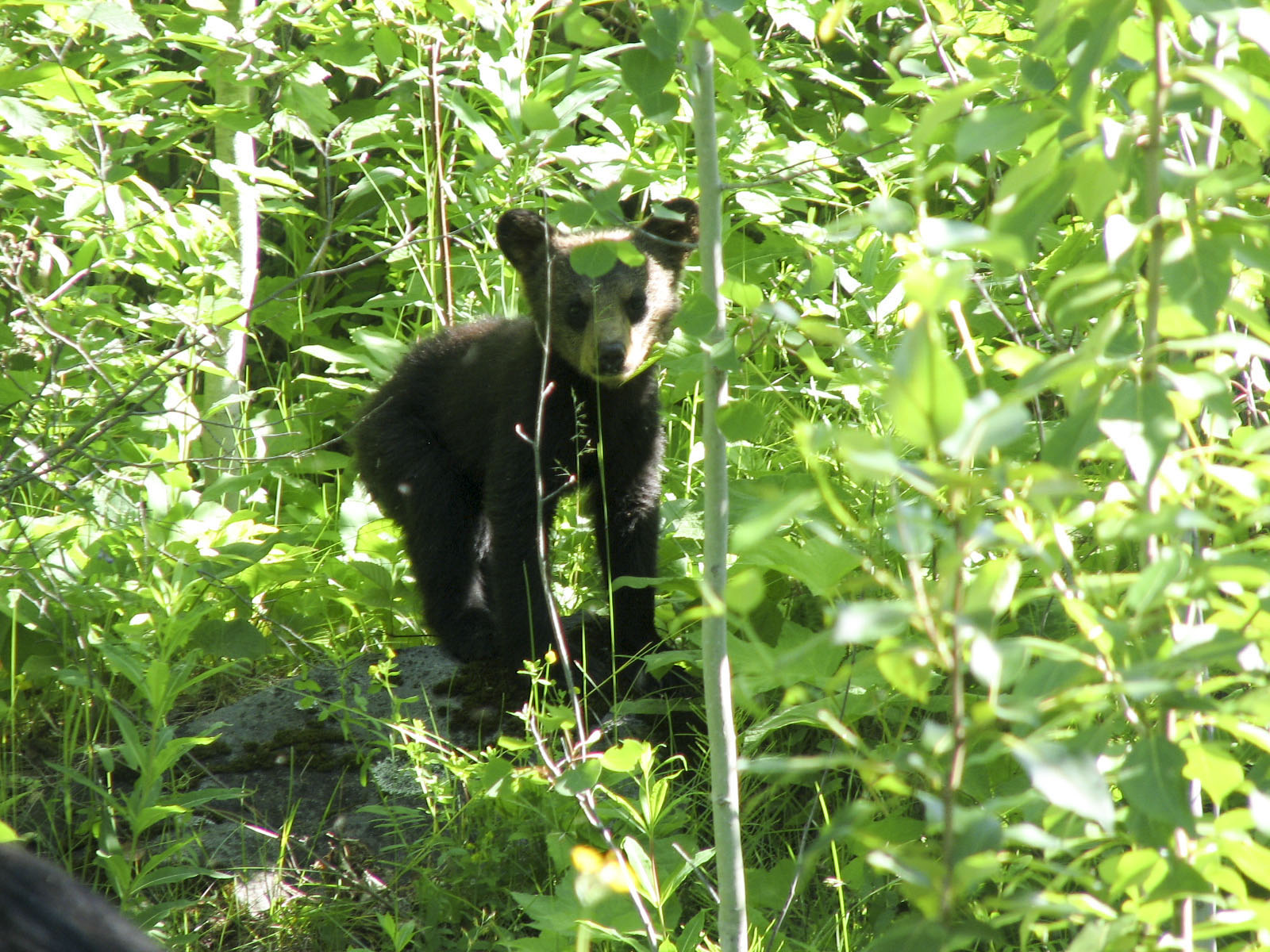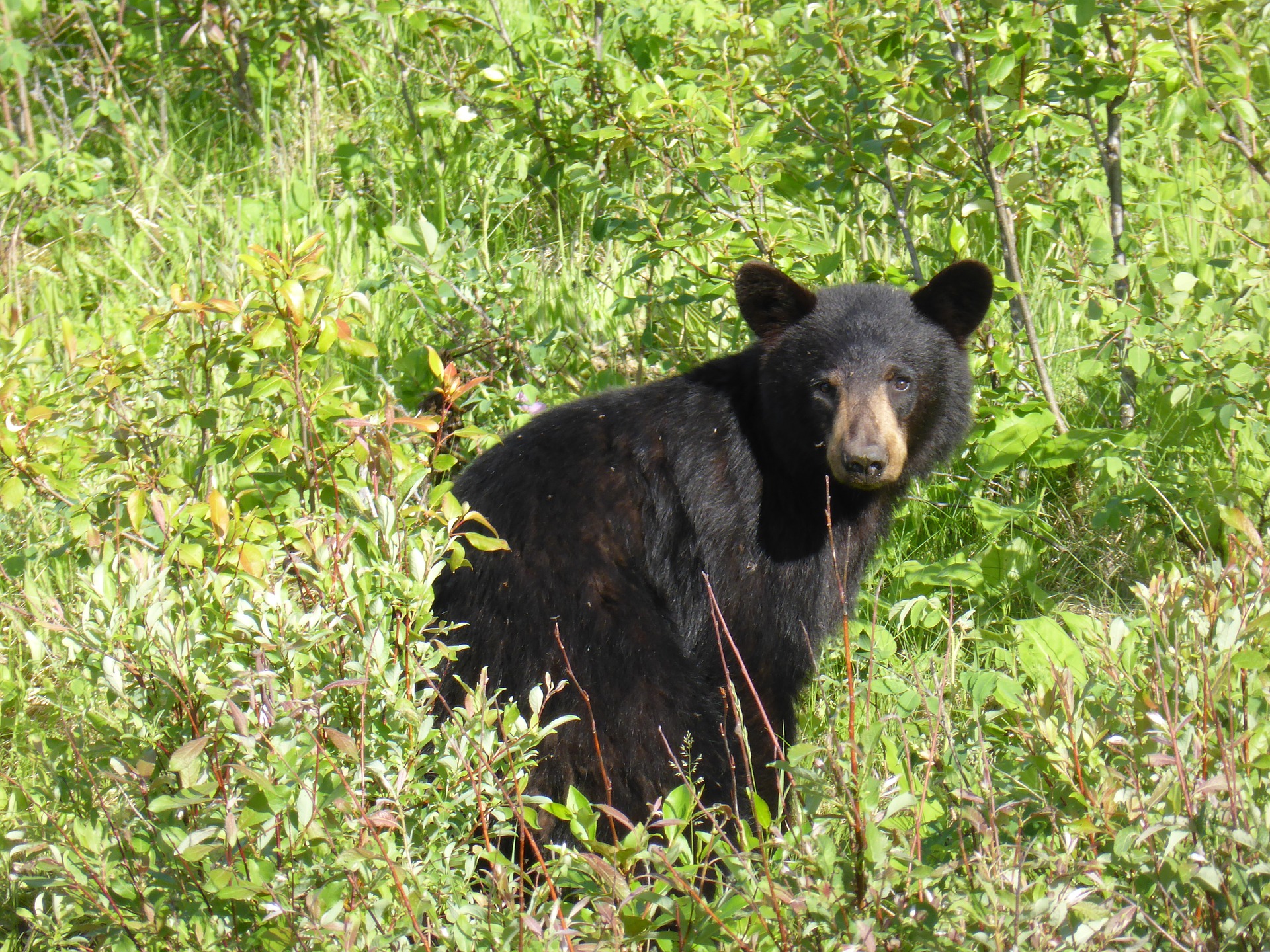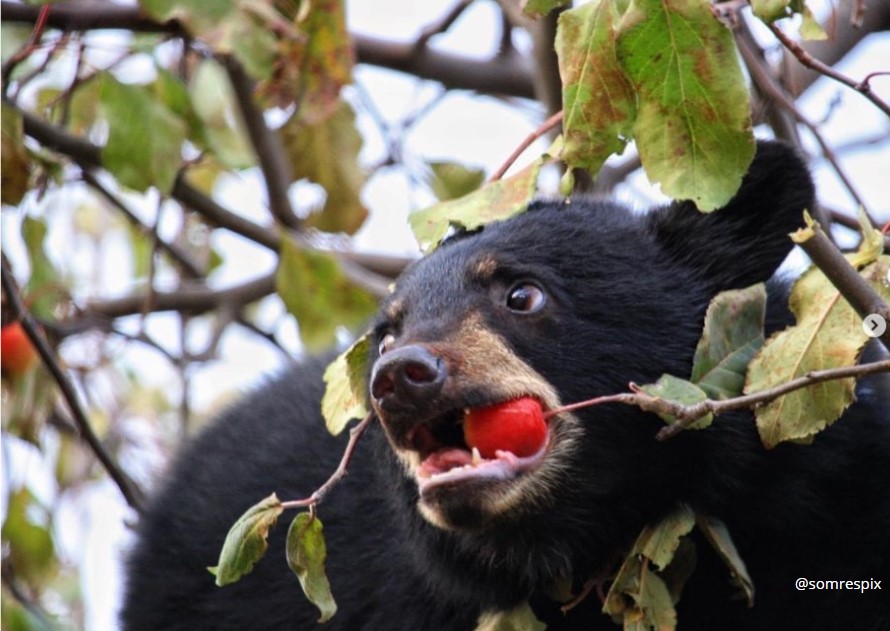
7 Bear Facts
Back to Superior Country BlogSuperior Country is home to an abundant population of black bear. If you’ve ever travelled through Northern Ontario, you’re likely to have seen one (especially in the Spring). They are beautiful creatures and play a great roll in the ecosystem. The above bear facts are to educate individuals on the species. Whether you’re touring the region in hopes to capture breathtaking photos of the impressive creature (from safe distance, of course), or are hunting them, Superior Country has an abundant population for all your needs.

1. Names / Terminology
Ursus Americanus is the scientific name for a black bear throughout North America.
Makwa is the Ojibwe term for bear.
Ours is the French term for a male bear while Ourse is the female term for a bear.
A young bear is referred to as a cub.
A male bear is a boar while a female is a sow.

2. Lifespan
The average lifespan of a black bear is approximately 14-18 years in their natural wild habitat. However, records indicate some living up to 25-30 years of age! An estimation of age can be gathered from viewing the rings in a cross section of a tooth root. This is done by using a microscope on a deceased bear. On a live bear, average judgement of height and weight can be used to guesstimate age. Age of sexual maturity varies between the third and fifth year. At birth, cubs often weigh less than a pound and are only 15 to 20 cm long! Cubs stay with their mother for 16 to 17 months old. Sows usually mate every second year as nursing and raising cubs require a lot of energy.

3. Size
Boars continue to grow until their seventh year; sows stop growing earlier, usually at their fifth to sixth year. As all animals, their average size will vary depending on how plentiful their habitat is for dietary options and general population. As mentioned, cubs weigh less than a pound at birth, after their first year of life however, they’ll have already reached 35-50lbs! An average boar weighs anywhere from 280-340lbs, a sow will average smaller at 180-240lbs. Of course, in varying habitat they can average much smaller or larger.
4. Mating
Mating occurs June-July. The gestation period for black bears is rather uncommon when compared to a lot of other mammals. A few days after fertilization the embryos stop growing. They do not implant in the uterus until the beginning of the denning period – which happens in November, depending on the year. The embryo implant highly depends on the amount of food the sow can find to gain weight before denning. A sow who hasn’t consumed a fair-large abundance will not continue gestation. A sow that has and weighs 160lbs + will continue gestation. Come the following January-February, while still in the den, the sow will have her cubs. Typically, 2 cubs are born, however, sometimes up to 4 or as few as 1.

5. Diet
Bears are not picky eaters, they will consume a variety of dietary options to fulfill their needs. In terms of plant based foods, berries, apples, nuts (including acorns) and mushrooms are favored. When the opportunity is present, they’ll consume plenty of meat based products as well; fish, birds, moose calves and deer fawns in the spring and accessible already dead animals. Lots of “dump bears” will eat pretty much any food thrown away by humans. They also develop a sweet tooth for donuts, sweets and trail mix items, lots of outfitters use these items to bait bear stands.

6. Habitat
Bears are rather adaptable animals and can live in varying habitats. The healthiest are found in heavily wooded, dense bushed areas. Similar to most wildlife, they prefer areas of low human pressure, high dietary options and within a 50-80km range to water. Of course, some bears will switch out one benefit for an increased different benefit. For example, “dump bears” will switch out their liking for low human pressures for the need of high dietary options by feeding and remaining near landfill sights. Apart from mating season and when sows have their cubs, bears are solitary animals. They don’t often congregate in groups, again, this can be factored out if near a heavily supplying food area such as a landfill sight or even a river with high fish populations. In preference, bears far out in secluded, natural habitats will be found in ranges of one bear per ever 10km².
Bears can travel great distances for either food or mating needs. Boars will travel further, some biologists have livetraped and relocated a boar 200km+ away, just to find the bear back in the area! Bears are animals of successful habit, meaning if they find a location successful to have high dietary options they’ll continuously return back, making bear trails throughout the forest that are quite visible if one was to find a highly used one.

7. Hibernation
As mentioned in earlier bear facts, bears go into hibernation typically in November. This will vary depending on the year, if the temperatures drop early and snow comes early, they’ll undergo hibernation sooner. Boars usually stay out longer than sows and go into their den after the first-second snowfall. Their dens aren’t roomy, the bear will find a small den that they have to curl up in in order to confine heat in better. For sows the dens get particularly small after they’ve had cubs and need to share the already limited space!
Dens are formed from fallen over logs, overturned tree roots, or found naturally in a hillside. During their slumber (which can sometimes be up to 7 months!) they do wake up, if the temperature rises, bears will take a stroll out of their dens and return before the temperature drops. Once spring arrives, bears will emerge from their dens and begin eagerly hunting / foraging for food for themselves, and sows for their cubs as well.

*Bonus* Bear Encounters – what to do
Although bears are large and portrayed to be killers, they often aren’t interested in interacting with humans in anyway unless they feel threatened or smell food. These following tactics will aid in eliminating bear encounters and evading encounters.
- Food. When backcountry camping or even hiking, it is of good practice to think like a bear in terms of food. If it smells it and finds it to be easily accessible it will try to go for it. When camping overnight, do not leave a cooler full of food right next to or in your tent. This will put you in closer proximity of danger. If you place a cooler or food bag away from you, a bear will go for the food and only the food as they do not aim to have human encounters.
- Better Together is a good thing to remember when in areas where bears could be. Hiking, camping, backcountry adventuring in groups will greatly decrease your chances of a threatening bear encounter, or an encounter at all. As mentioned, they do not aim to have encounters with humans and will often move further away if they hear an abundance of noise or see a group of people.
- Stop, Drop, Roll? No, that is for a fire. Upon encountering a bear it is best to back away slowly and calmly. Talking in a low/deep voice helps make your presence known without coming off threatening. Do not scream, do not run, do not intimidate. More often then not, they’ll simply turn around and head off in the opposite direction.
- Cubs are so cute! Sure, they may be, however a sow is not so cute and highly aggressive if she feels as though her cub may be in danger. Never place yourself between a sow and her cubs, this is an automatic threat and she will protect by all means necessary.

The above bear facts are to educate individuals on the species. For further information visit Ontario Parks Blog page.

 Walleye
Walleye Northern Pike
Northern Pike Lake Trout
Lake Trout Brook Trout
Brook Trout Steelhead
Steelhead Salmon
Salmon Smallmouth Bass
Smallmouth Bass Perch
Perch Superior Picnics
Superior Picnics